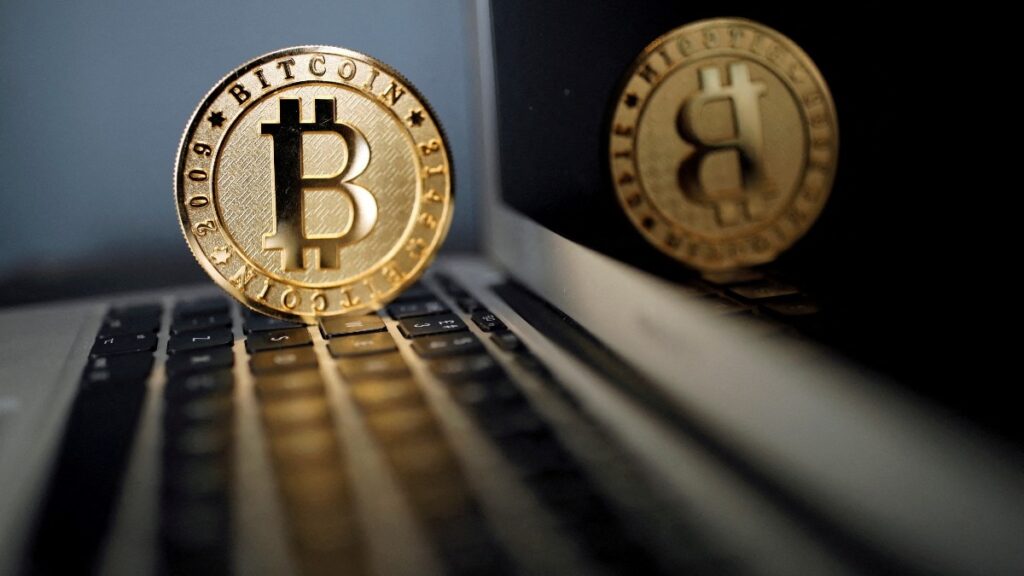Bitcoin Halving Complete: Enthusiasts and Analysts Express Diverse Opinions

The leading digital currency, Bitcoin, has experienced its highly anticipated ‘halving’ event, a recurrent phenomenon that takes place approximately every four years.
In the wake of this event, Bitcoin has shown a noteworthy stability in its market value, with a minor drop of 0.47%, closing at a price point of $63,747.
Bitcoin aficionados had long been awaiting this critical alteration in the coin’s technical protocol that serves to slow down the introduction of new Bitcoin into the system. The enigmatic founder of Bitcoin, known as Satoshi Nakamoto, designed the halving procedure as an integral feature of the currency’s programming.
Many supporters of digital currencies regard the halving as evidence of Bitcoin’s increasing rarity, given that Nakamoto capped the Bitcoin supply at 21 million coins. However, some critics dismiss the halving as a minor code change that’s excessively publicized by investors to drive up the currency’s market value artificially.
The practice of halving slashes the rewards that miners receive for adding new coins to the Bitcoin network, thus making new coin production more expensive.
“Today, we are entering a new chapter in Bitcoin’s history. The network is seeing wider use as Layer 2 solutions like Stacks increase adoption, and innovations such as new token standards (Runes) and Bitcoin re-staking are set to drive progress in the ecosystem. After the current halving event, Bitcoin’s annual rate of inflation could drop below that of gold, a landmark that holds significant implications. This could especially influence the younger demographics to consider Bitcoin as the contemporary equivalent of gold, potentially reshaping investment philosophies for the coming years,” stated Parth Chaturvedi of CoinSwitch Ventures.
Manhar Garegrat from Liminal Custody Solutions observes, “While the immediate effects of the 4th Bitcoin halving might be subtle, it’s important to consider the secondary impacts. Previous halvings have precipitated increased market fluctuations and trading activity. Expectedly, similar conditions this time could result in price variations and changes in investor perspectives. The reduction in available Bitcoin due to halving could cause prices to rise and attract new investors to the crypto space. Additionally, it might stimulate the creation of novel crypto-market products, much like the development of spot ETFs globally.”
Shivam Thakral of BuyUcoin anticipates, “In the short-term, Bitcoin’s valuation may see dips following the halving, but history hints at a subsequent market upheaval leading to record price levels in the ensuing months. Notably, in the span of a year to a year and a half after the halving, a significant move away from Bitcoin and an increased interest in alternate cryptocurrencies (altcoins) often occur.”
Jyotsna Hirdyani from Bitget points out, “After a halving, the crypto market customarily enters a phase of increased price volatility as it seeks stability. Past post-halving periods often brought substantial upward movement for Bitcoin, with the currency reaching unprecedented peaks. The resilience of the market combined with the surge in institutional attention towards Bitcoin generates a positive outlook among investors, with many speculating on Bitcoin’s potential to achieve new historical price levels.”
“The halving contributes to Bitcoin’s deflationary characteristic by lowering block rewards, which could draw in more investment over time due to the amplified stock-to-flow ratio. ZebPay is optimistic about Bitcoin’s prospects, both in the immediate future and over the long term,” says Rahul Pagidipati of ZebPay.
Rajagopal Menon of WazirX analyzes, “Looking back at Bitcoin halving instances, we see typical market cycles that begin with a speculative pre-halving surge, followed by a post-halving period of consolidation, and ultimately, a steep climb to new heights. The current trend is particularly promising, with Bitcoin having already achieved its all-time high ahead of the halving, which conventionally occurs several weeks post-event.”
“The halving events of Bitcoin have historically been precursors to significant upticks in its price. For example, after the first halving in 2012, Bitcoin escalated from $13 to a remarkable $1,152 the next year. Similarly, after the second halving in 2016, the price rose from $664 to $17,760 the following year. The 2020 halving witnessed Bitcoin soar from $9,734 to an astonishing $67,549 in the next year. The fourth halving slated for April 2024 will cut the mining reward down to 3.125 BTC per block. Interestingly, Bitcoin has already surpassed the $73,000 threshold in anticipation of this event. Investors are encouraged to continue their due diligence and maintain diversified portfolios,” notes Edul Patel of Mudrex.
Mohammed Roshan Aslam of GoSats perceives, “Despite the potential for Bitcoin’s value to dip further due to global macroeconomic factors, it presents an attractive long-term investment opportunity. Bitcoin, traded entirely online, is more accessible than traditional investments like gold, stocks, and real estate. Although Bitcoin is seeing a downturn before the halving, we must remember that the usual post-halving surge may not follow the trend this time.”
Bitcoin has recently hit a record high of $73,803.25 in March, after recovering from the sharp drop in 2022. As of Thursday, it was trading at $63,800.
Bitcoin has also been buoyed by the excitement from the US Securities and Exchange Commission’s endorsement of spot Bitcoin exchange-traded funds in January, as well as by the anticipation of interest rate reductions by global central banks.
Preceding halvings in 2012, 2016, and 2020 have been followed by rallies, suggesting to some crypto advocates the likelihood of post-halving price increases. Nevertheless, several market experts express doubts about such forecasts.
JP Morgan analysts mentioned earlier this week, “We do not foresee a rise in bitcoin prices after the halving, as the market has already factored this in.” Their perspective takes into account the current ‘overbought’ condition of Bitcoin and the reduced venture capital flow into the crypto sector this year.
Financial authorities are consistently reminding investors about the risks of Bitcoin, citing its limited practical use, though more are beginning to sanction Bitcoin-related investment products.
S&P Global crypto analyst Andrew O’Neill remains skeptical about the ability to predict Bitcoin’s future price from past halving events, pointing to the complex and multifaceted nature of market variables.
Bitcoin has struggled to maintain a definite trend since hitting its March record, facing downsides in recent times amid global political unrest and the anticipation of a prolonged epoch of high interest rates set by monetary authorities.
Source link
#Bitcoin #halving #spurs #mixed #reactions #among #enthusiasts #analysts






